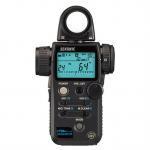Subforums
-
The EOSHD YouTube Channel (22,349 visits to this link)
17,194 topics in this forum
-
- 1.2k replies
- 399.7k views
-
- 0 replies
- 122 views
-
- 700 replies
- 273k views
-
- 9.1k replies
- 2.4m views
-
- 5.8k replies
- 1.7m views
-
- 1.8k replies
- 681.1k views
-
- 4 replies
- 203 views
-
- 0 replies
- 10 views
-
- 0 replies
- 44 views
-
- 2 replies
- 214 views
-
- 7 replies
- 115 views
-
- 13 replies
- 649 views
-
- 6 replies
- 501 views
-
- 2 replies
- 187 views
-
- 5 replies
- 390 views
-
- 0 replies
- 71 views
-
- 4 replies
- 150 views
-
- 20 replies
- 7.3k views
-
- 22 replies
- 686 views
-
- 0 replies
- 187 views
-
- 28 replies
- 1.1k views
-
- 458 replies
- 103.6k views
-
- 32 replies
- 2.7k views
-
- 102 replies
- 51.6k views
-
- 2 replies
- 177 views
-
- 13 replies
- 313 views
-
- 3 replies
- 294 views
-
- 5 replies
- 769 views
-
- 1 reply
- 544 views
-
- 19 replies
- 596 views
-
- 3 replies
- 633 views
-
- 11 replies
- 1.2k views
-
- 25 replies
- 2.4k views
-
- 32 replies
- 11.8k views
-
- 9 replies
- 897 views
-
- 11 replies
- 976 views
-
- 32 replies
- 2.3k views
-
- 0 replies
- 413 views
-
- 1 reply
- 441 views
-
- 16 replies
- 1.4k views





